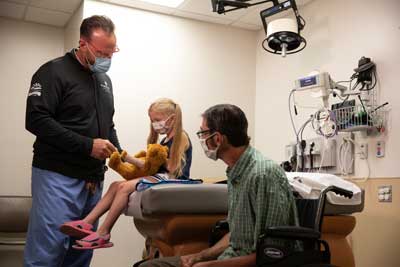What to Expect During an ER Visit
 From triage to discharge, Brookings Health's emergency medical team follows specific procedures to help patients receive the emergency care they need as quickly as possible.
From triage to discharge, Brookings Health's emergency medical team follows specific procedures to help patients receive the emergency care they need as quickly as possible.
The following steps help our team efficiently and effectively care for those with sudden illnesses or injuries. Explore the tabs to learn more about what you can expect when receiving care from Brookings Health System's emergency room.
Watch & Learn
Some medical emergencies can be a puzzle, but solving those problems and helping treat patients is our team’s passion. Dr. Adrian Dreessen shares what you can expect in the event you or someone you love needs to go to the emergency department.

